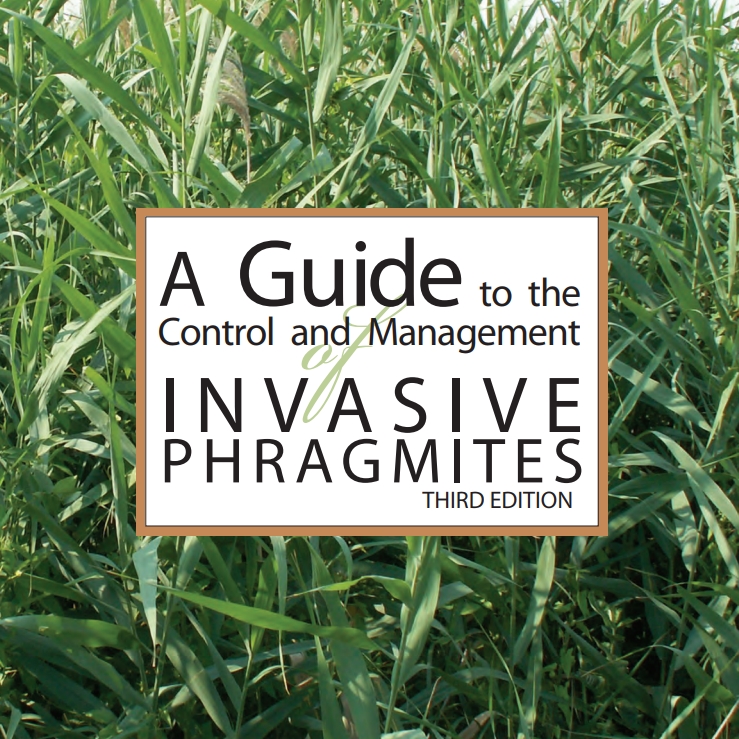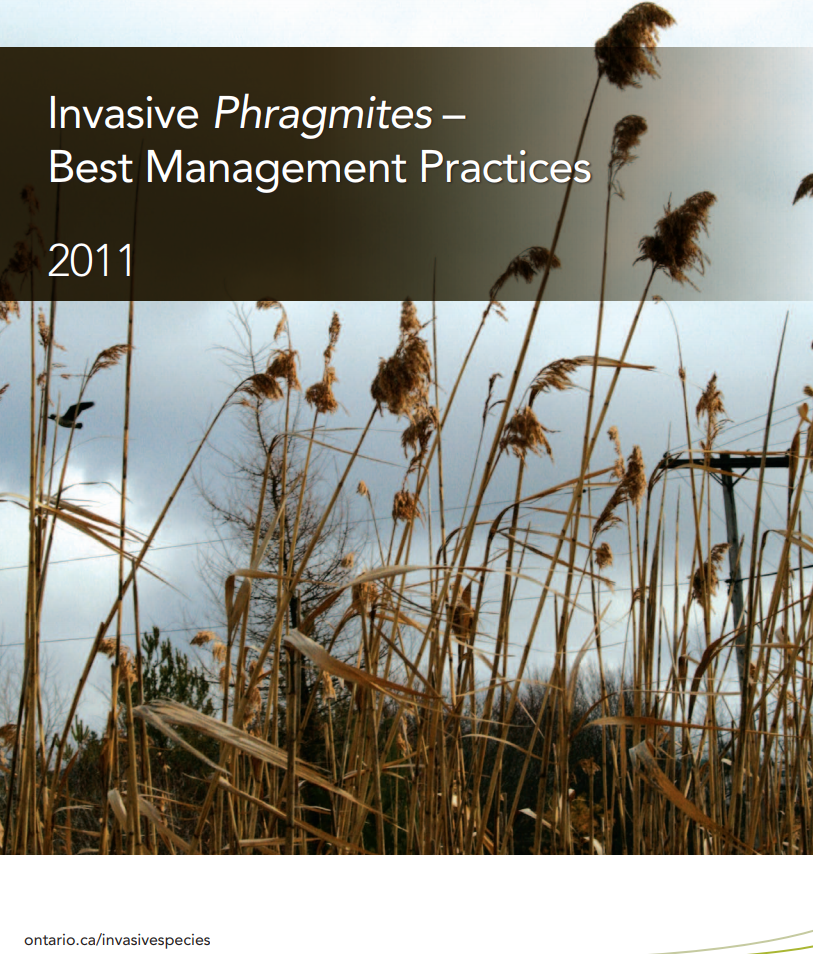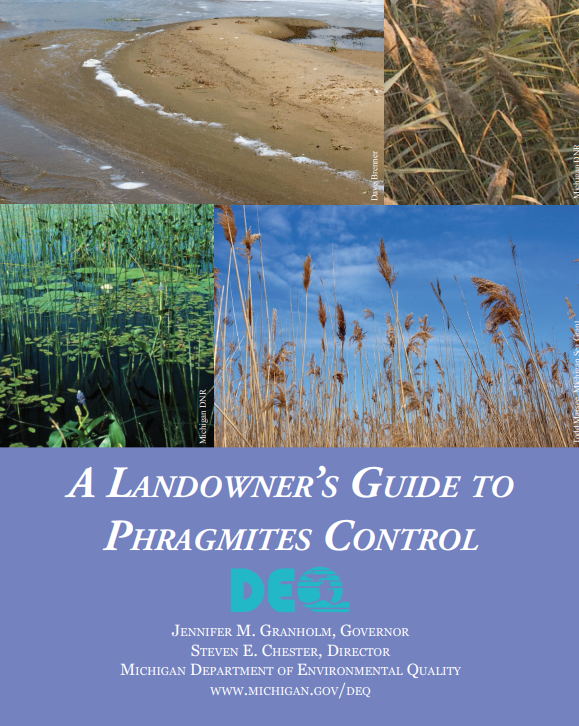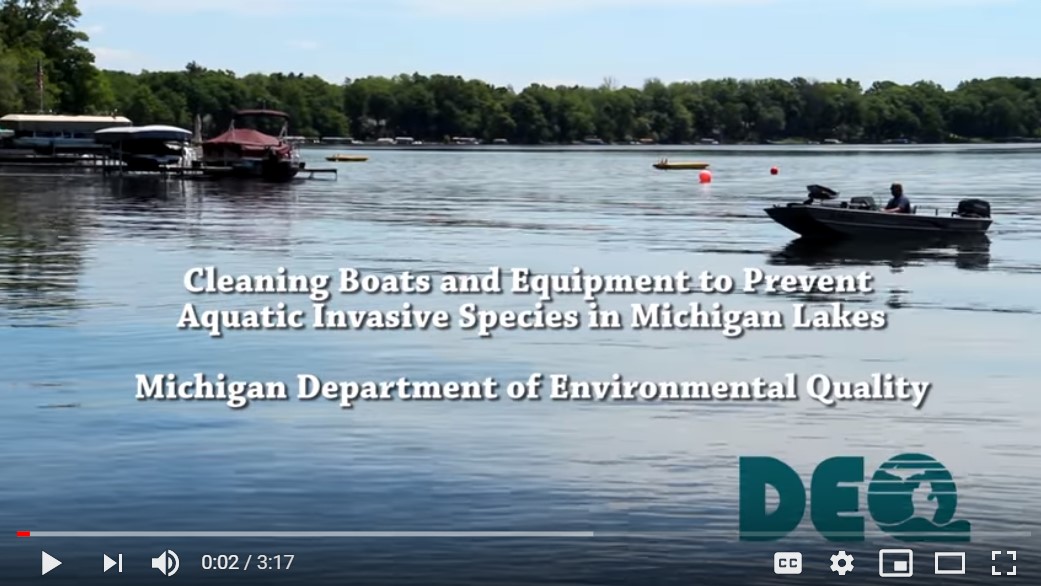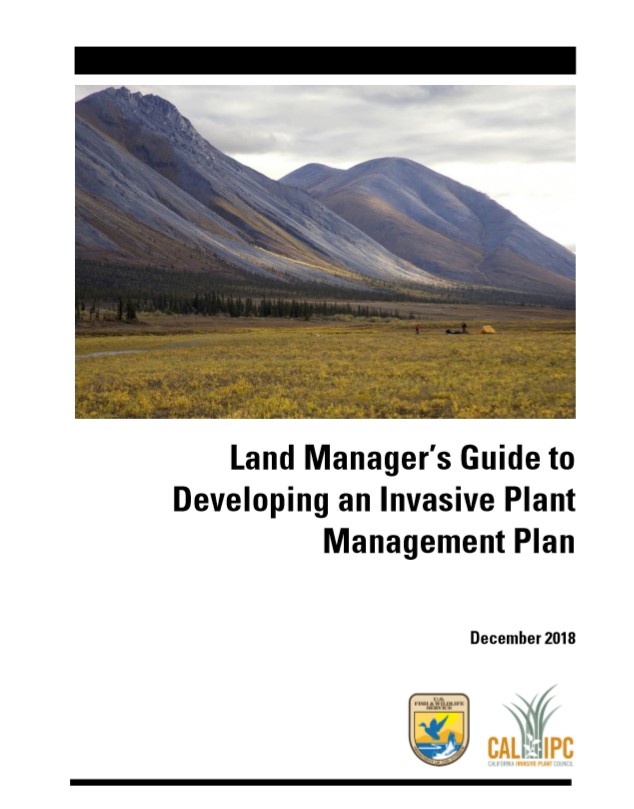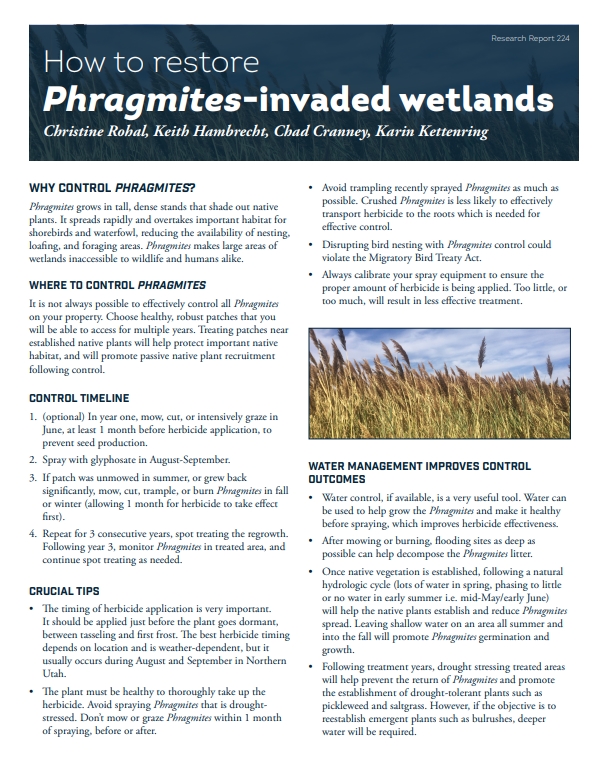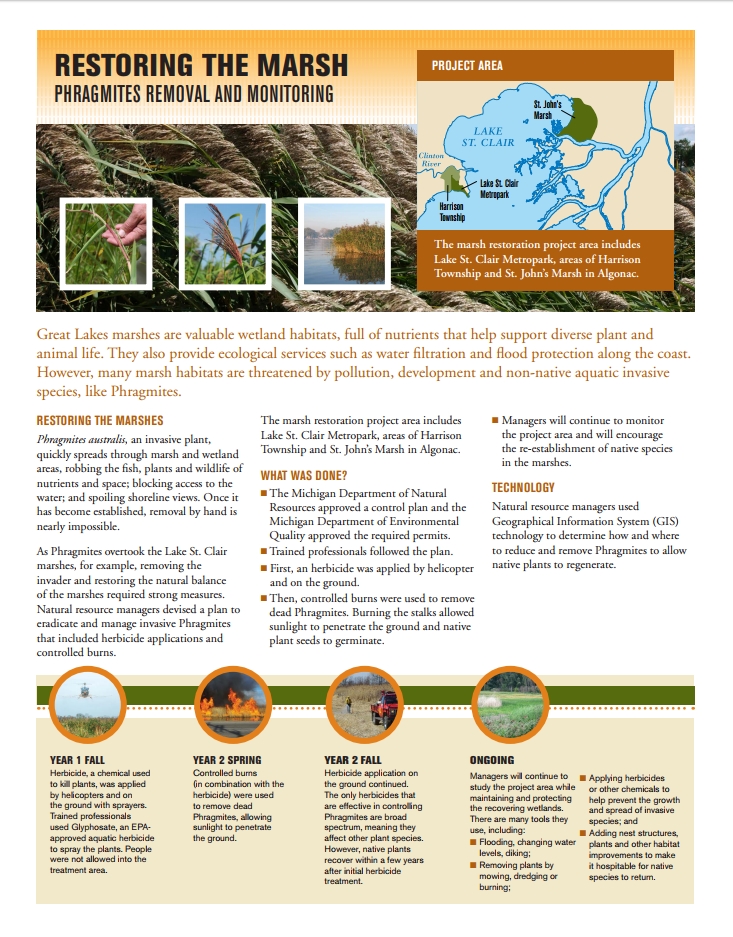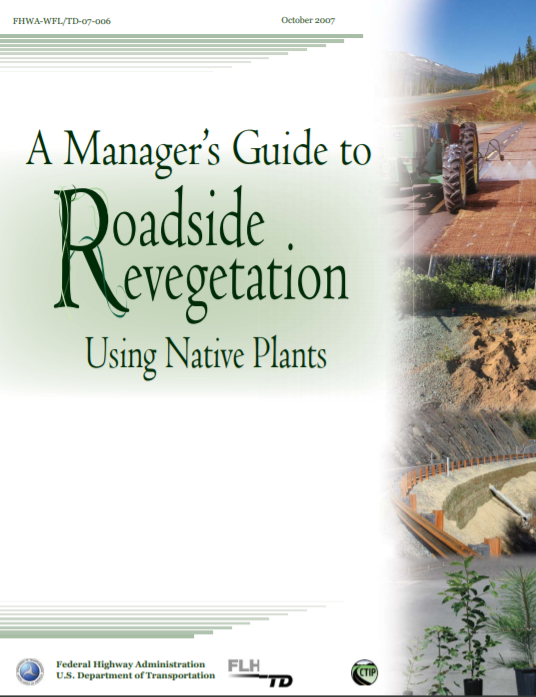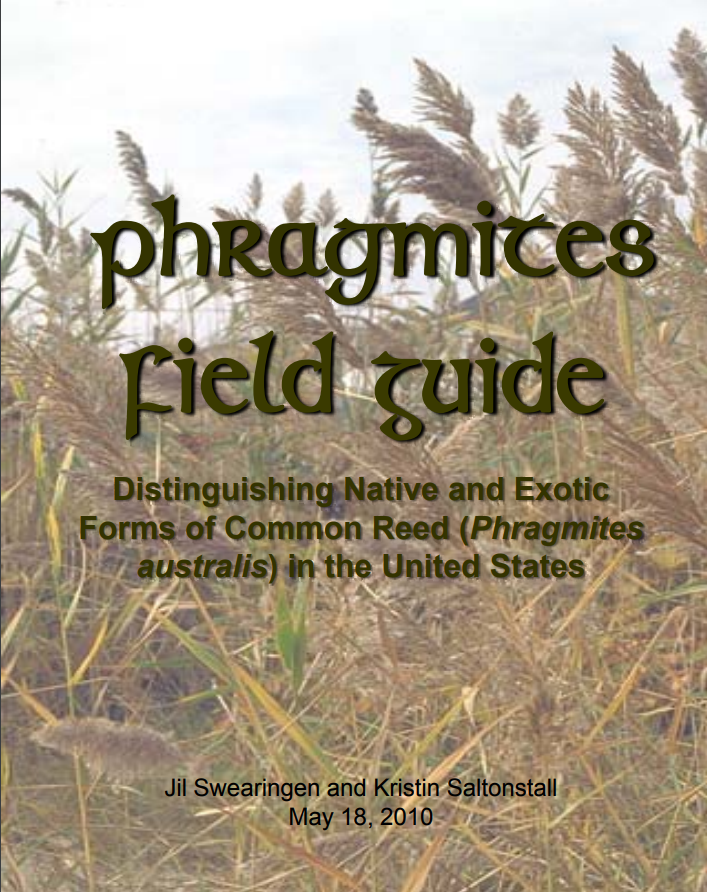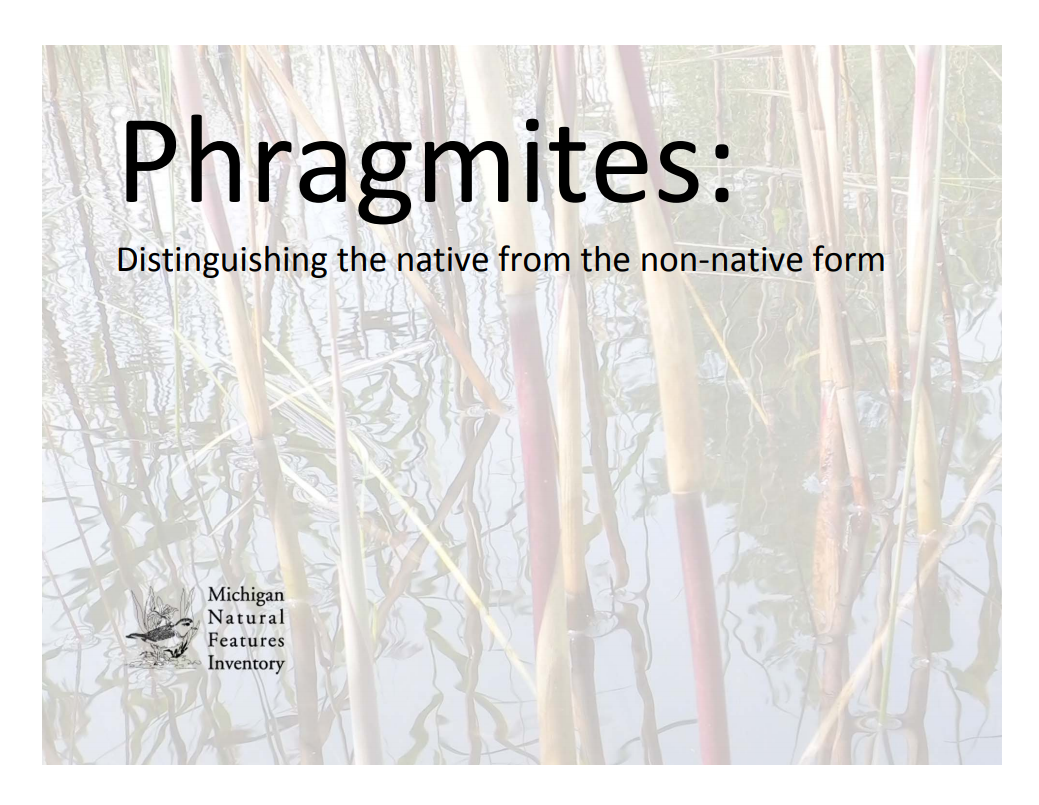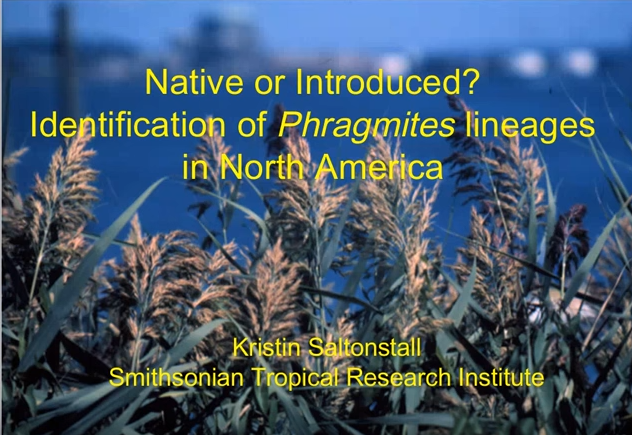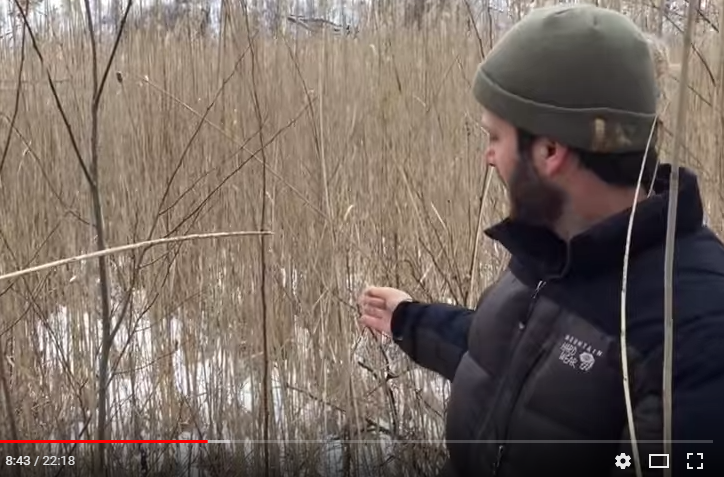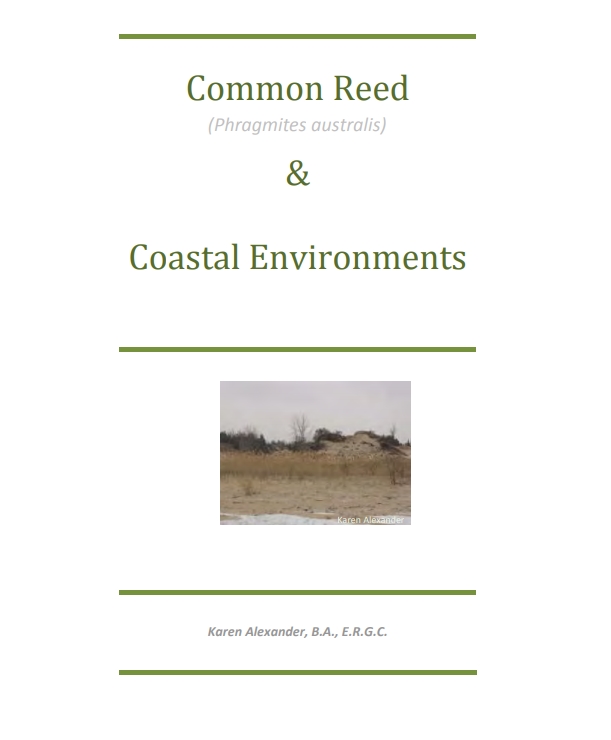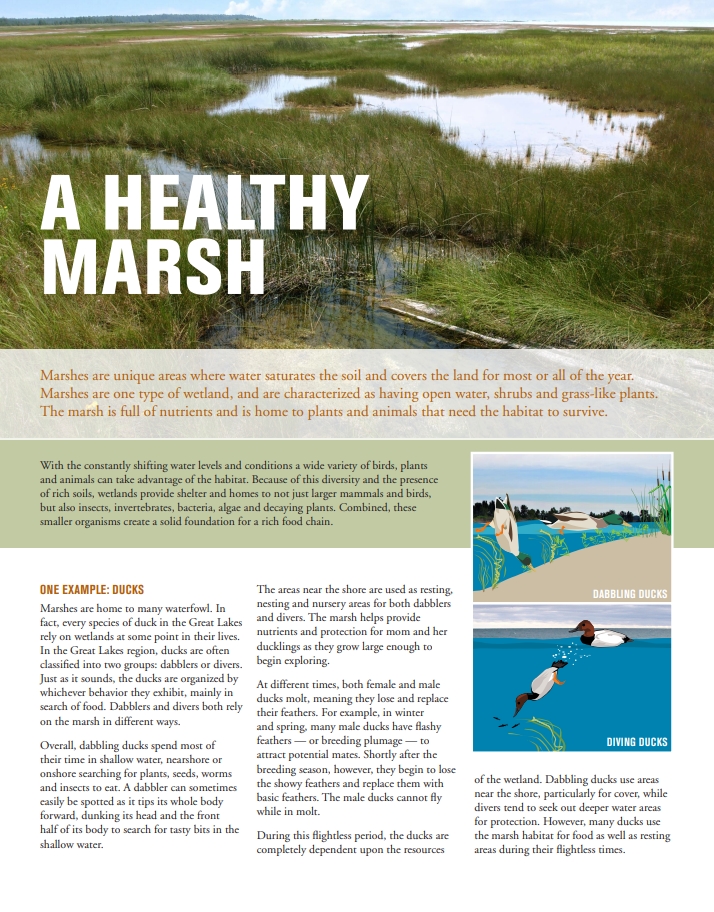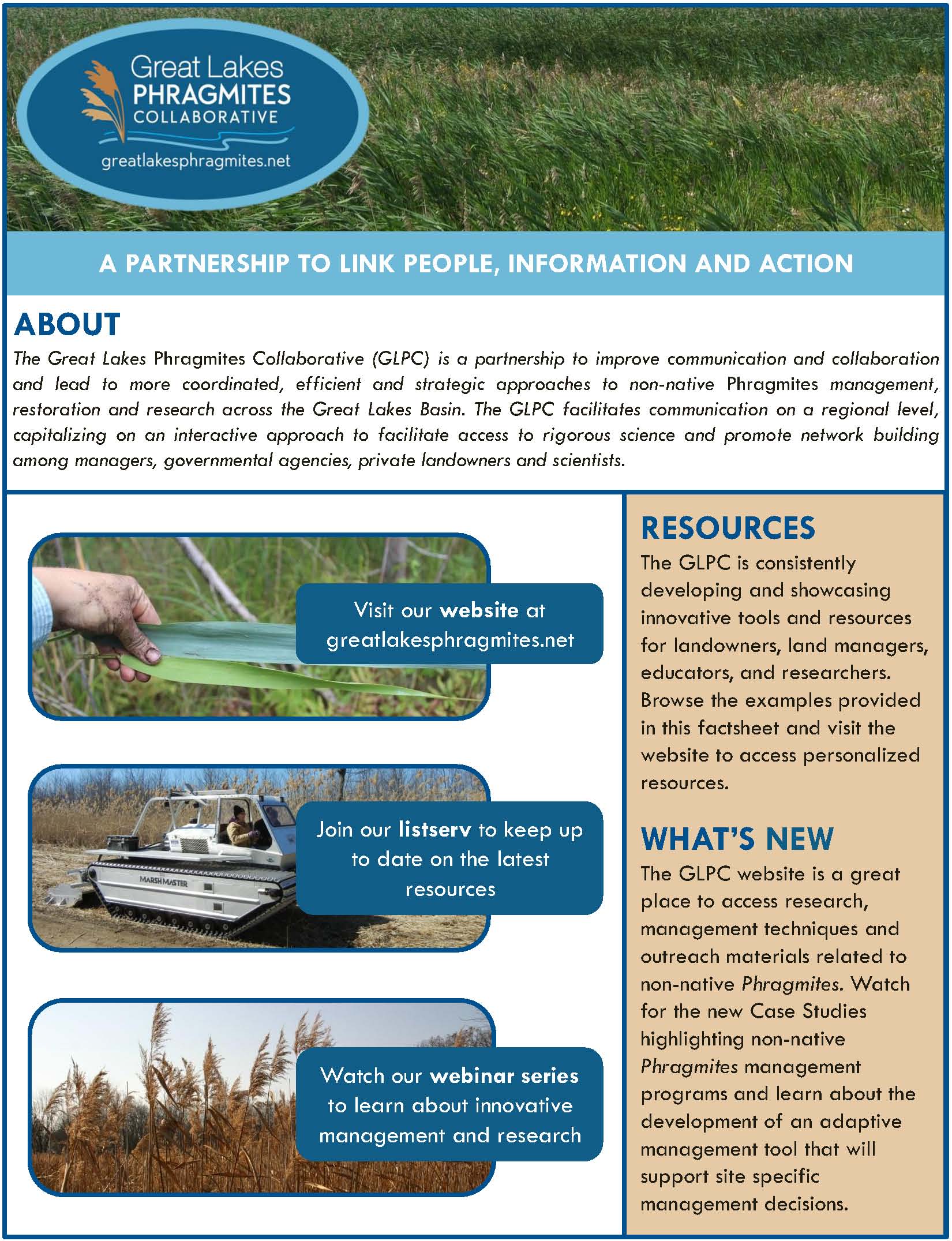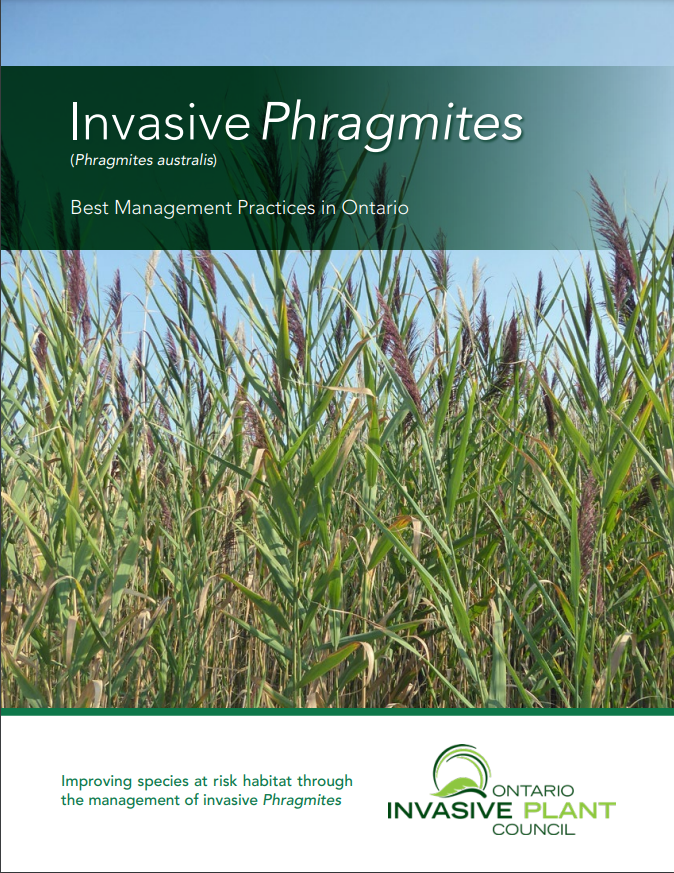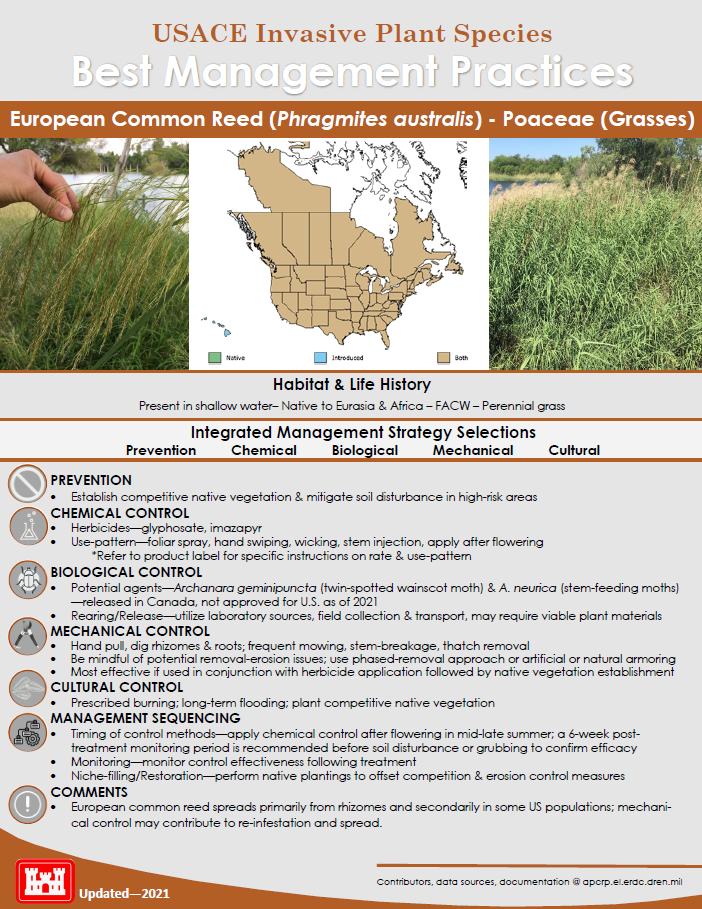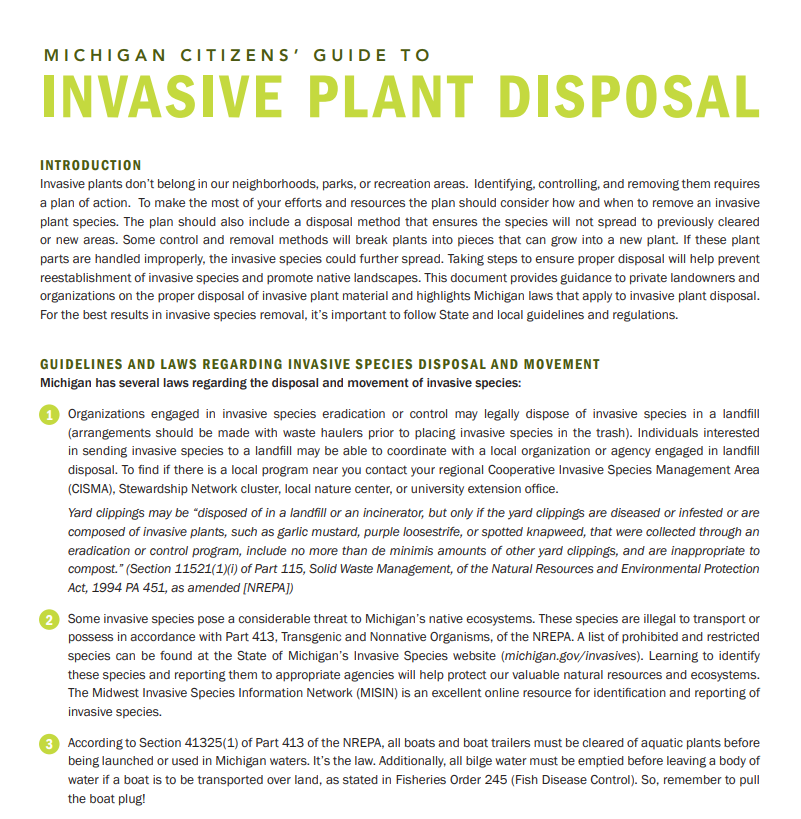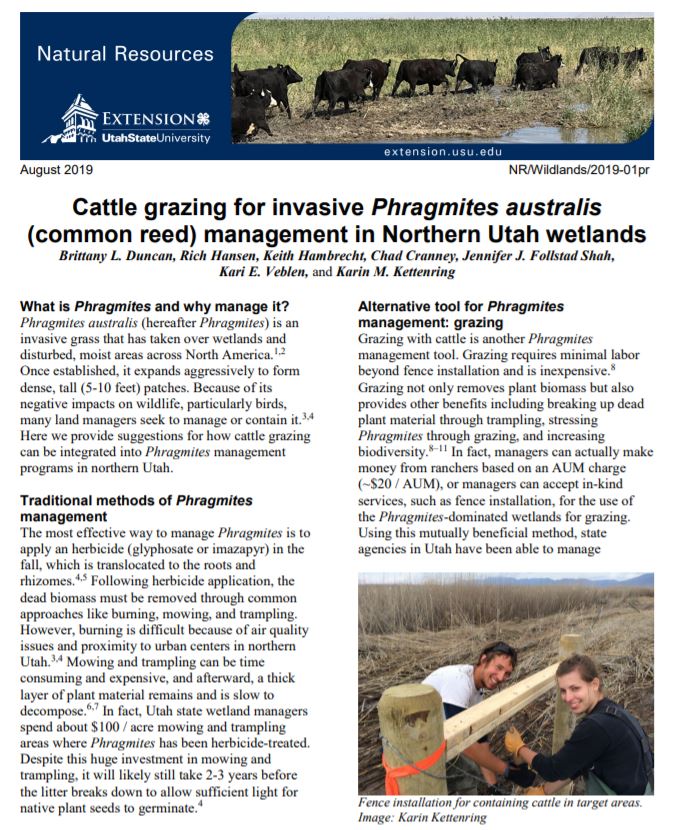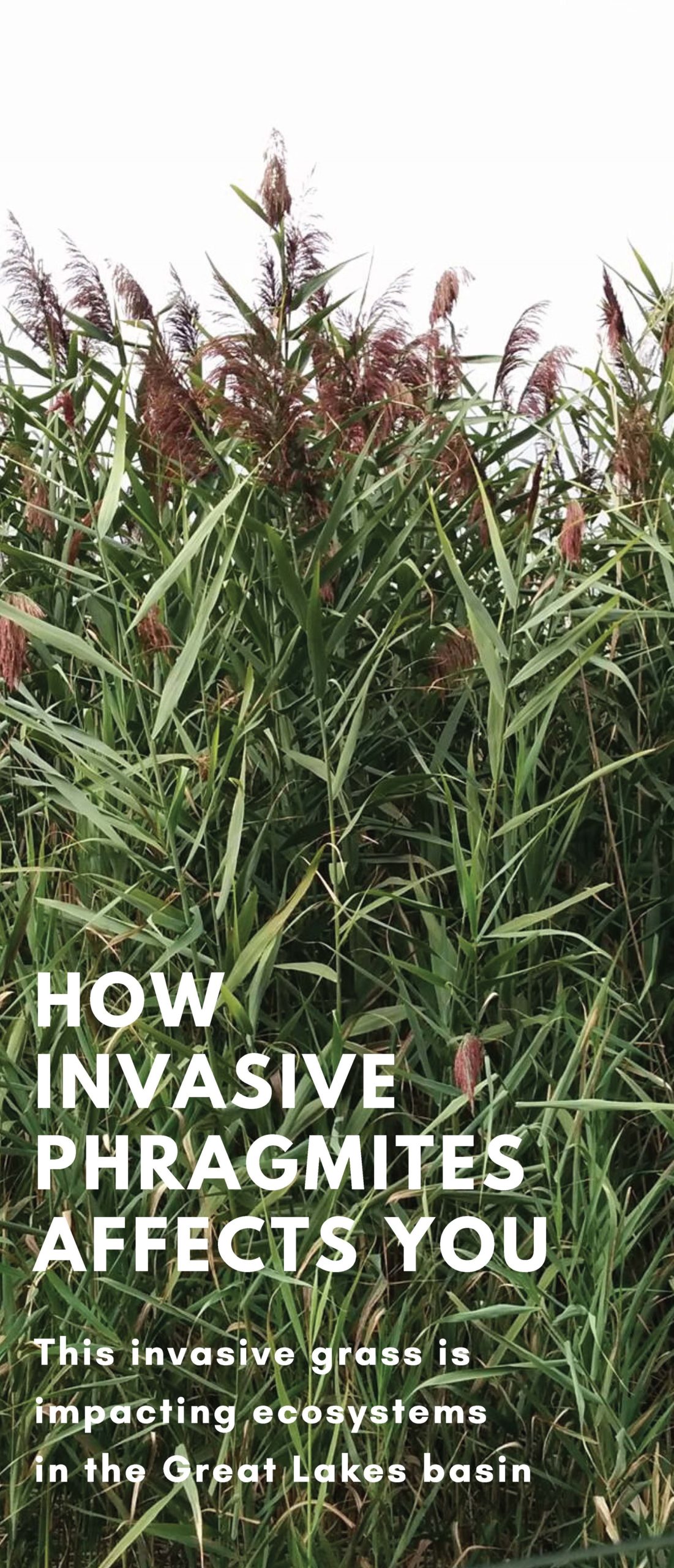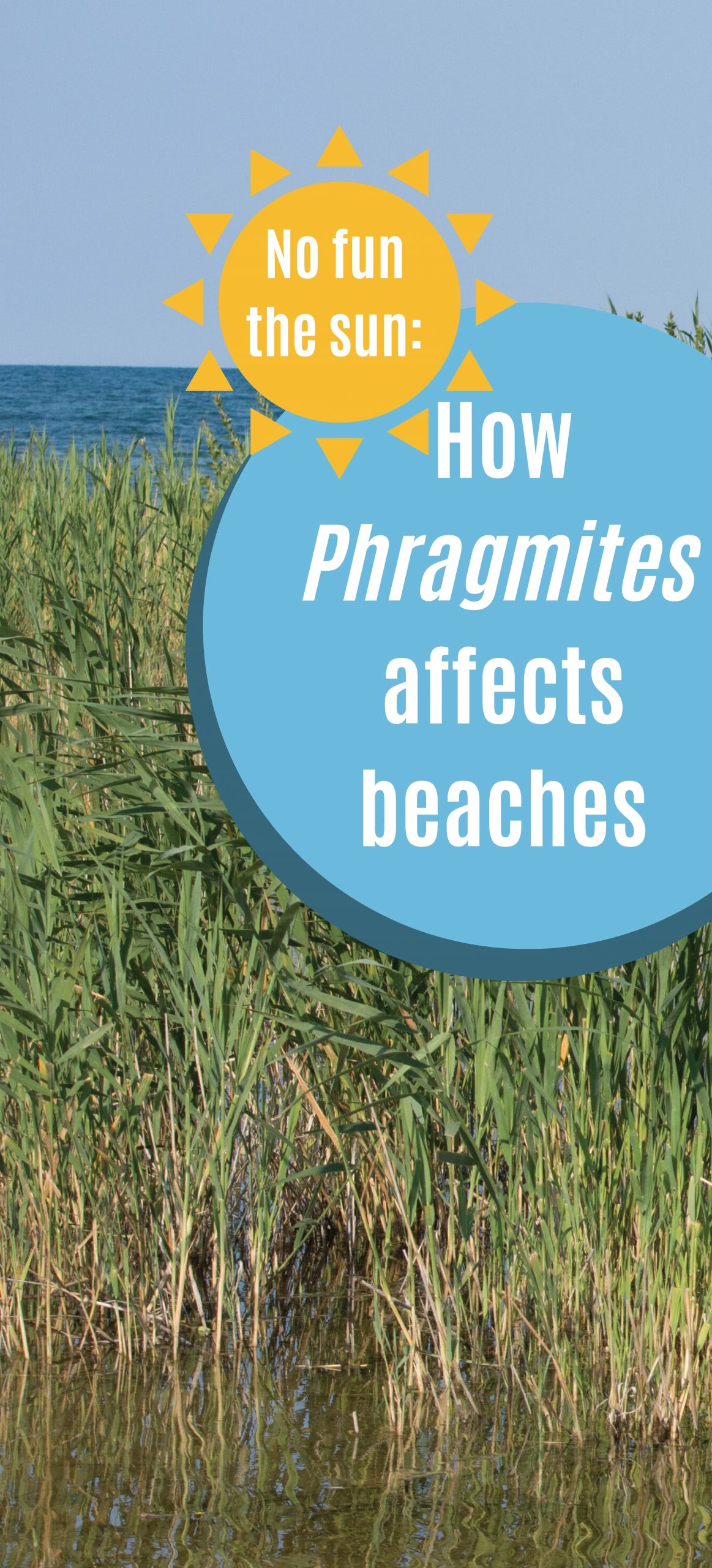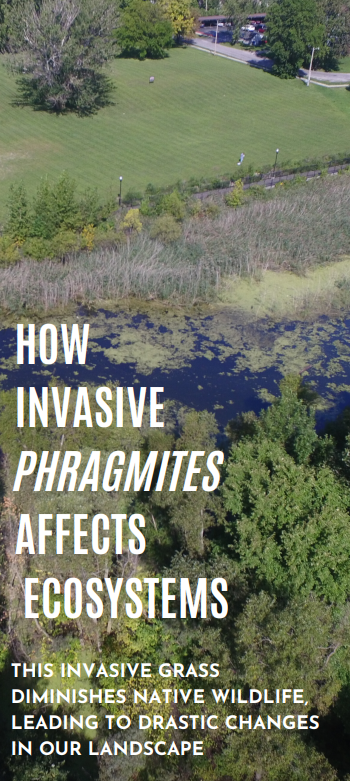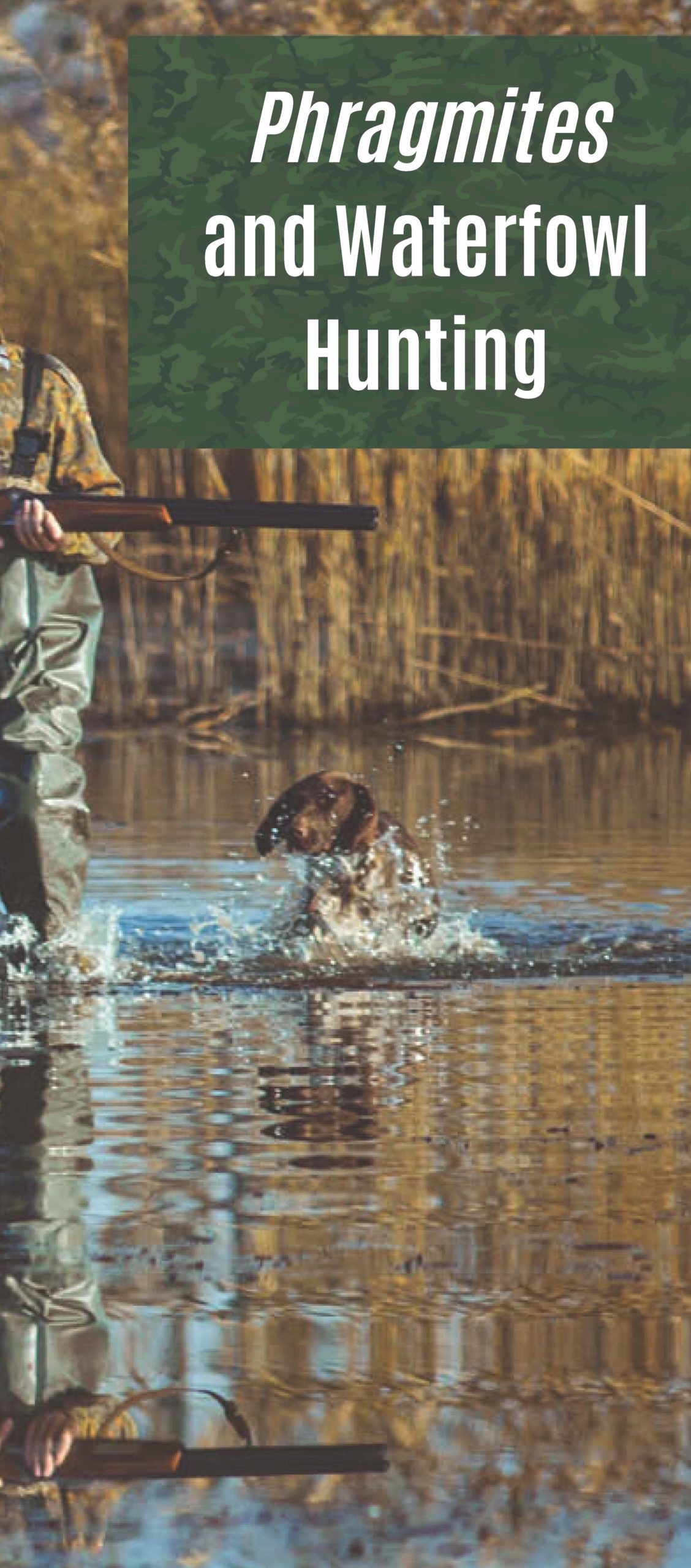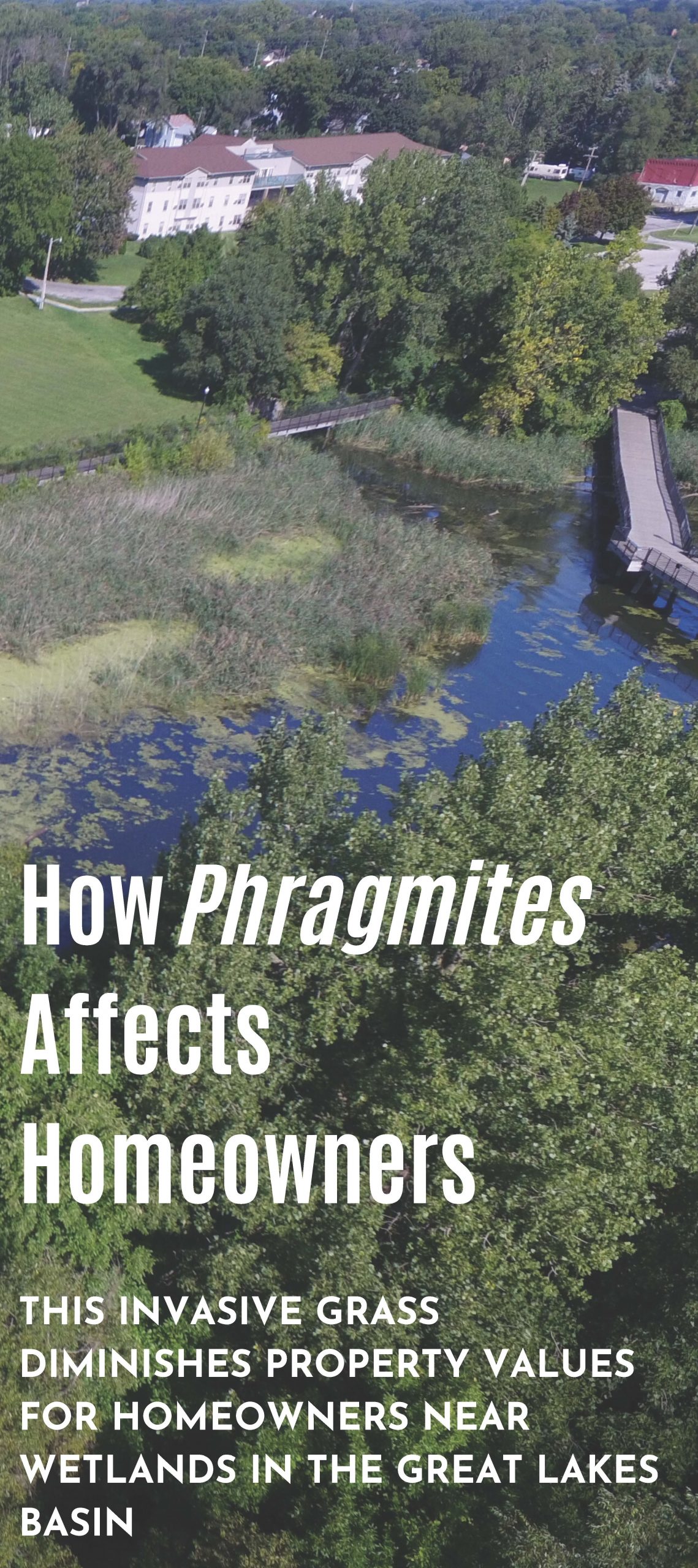Reference Library

Best management practices (BMP) guides, factsheets, brochures, tools, and other resources have been developed by many different organizations for a range of Phragmites-related topics. Scroll down to view resources organized by subject. Is there a guide or tool that we should add? Let us know!
- Management
- Disposal
- Equipment Cleaning
- Management Planning
- Restoration
- Identification
- Coastal Wetland Info
- The Phragmites Collaborative
- Other Resources
A Guide to the Control and Management of Invasive Phragmites
By the Michigan Department of Natural Resources
Invasive Phragmites Best Management Practices
By the Ontario Ministry of Natural Resources
A Landowner’s Guide to Phragmites Control
By the Michigan Department of Environmental Quality
Michigan Citizen’s Guide to Invasive Plant Disposal
Produced by the Michigan Department of Environment, Great Lakes and Energy
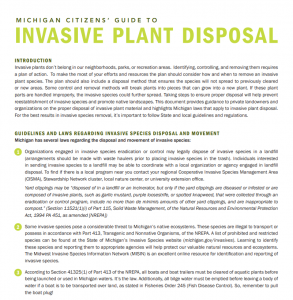
Clean Equipment Protocol for Industry
By the Ontario Invasive Plant Council
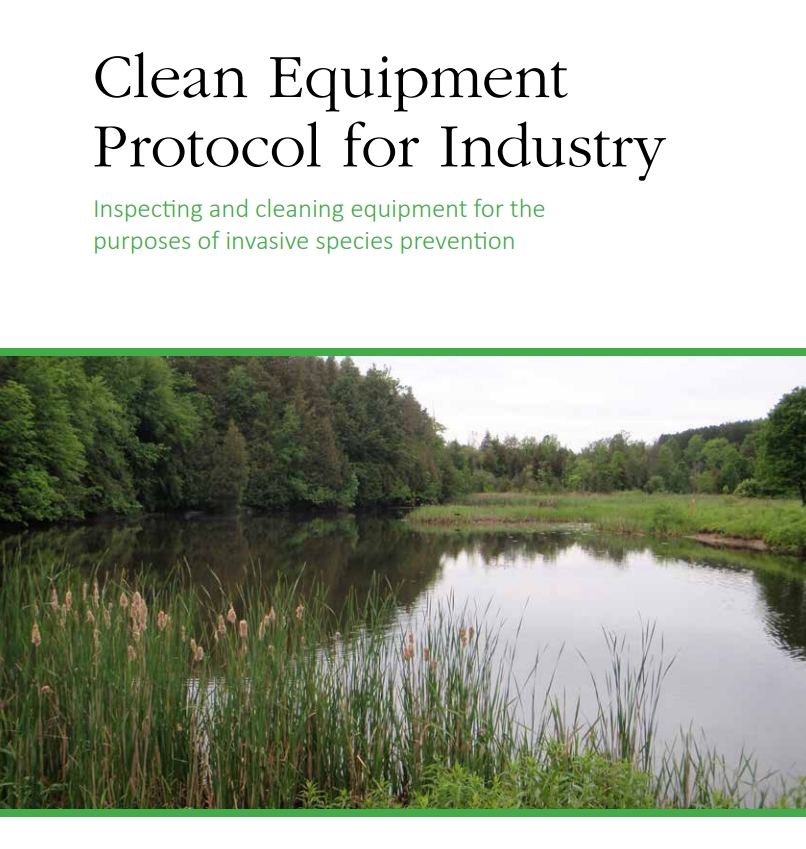
Play Clean Go
Best practices for decontamination for campers, trail users, homeowners, and field workers
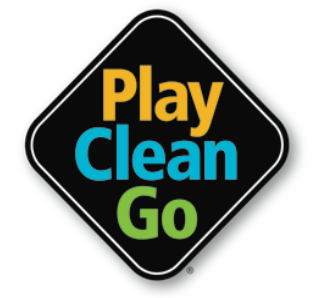
Sample sanitation protocol for contractors
This summarized protocol was shared with us from the Red Cliff Band of Lake Superior Chippewa. For this project, the Band removed invasive Phragmites from wastewater treatment plants with native phrag. They set stringent rules for the contractors to follow when removing the Phrag, transporting it to landfill, cleaning the concrete-lined beds of Phrag material, laying down substrate and plastic sheeting on the bottom of the beds, and planting the native Phragmites. There is a 400 page document describing this protocol in detail, but this is the summary. Thank you to the Red Cliff Band for sharing this excellent work!
How to Restore Phragmites-invaded Wetlands
By Rohal et. al from Utah State University
Restoring the Marsh–Phragmites Removal and Monitoring
By Michigan Sea Grant
A Manager’s Guide to Roadside Revegetation Using Native Plants
By the Federal Highway Administration (2007)
Check out our page on Native vs. Non-native Phragmites. The following resources are also available from external sources:
Phragmites Field Guide: Distinguishing between native and exotic forms of Common Reed (Phragmites australis) in the United States
By Jil Swearingen and Kristen Saltonstall (2010)
Phragmites: Native or Not?
By Michigan Sea Grant
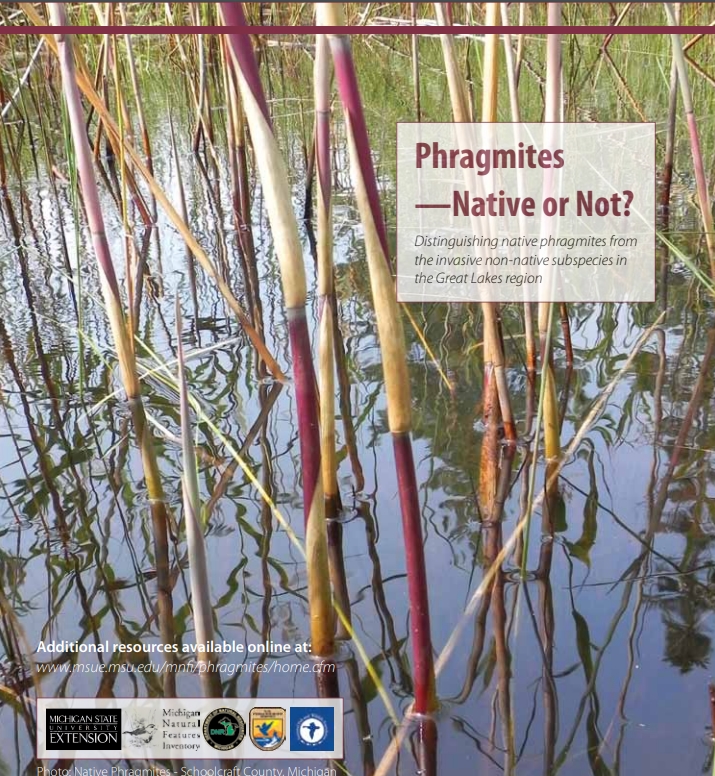
Phragmites: Distinguishing the native from the non-native form
By Michigan Natural Features Inventory
VIDEO: Native or Introduced? Identification of Phragmiteslineages in North America
By Dr. Kristin Saltonstall of the Smithsonian Tropical Research Institute (2015)
VIDEO: Dr. Dan Carter Explains How to Identify Native Phragmites
By the Southeastern Wisconsin Regional Planning Commission (2016)
Common Reed & Coastal Environments
By the Lake Huron Coastal Centre
Great Lakes Phragmites Collaborative Fact Sheet
By the Great Lakes Commission
- The biology of Canadian weeds. Phragmites australis (Cav.) Trin. Ex Steud, by Drs Mal and Narine is a comprehensive review of litterature on Phragmites biology and population dynamics, historic progression in North-America, andcontrol and management strategies.
- Read more about the Michigan Sea Grant restoration projects in Lake St. Clair coastal wetlands (St. John’s Marsh, Lake St. Clair Metropark, and Harrison Township) here.
- Glyphosate Fact Sheets (General & Technical): Two levels of detail on glyphosate, one of the most common herbicides used for Phragmites management, from the National Pesticide Information Center. The technical fact sheet contains information about surfactants as well.
- Invasive Phragmites: a fact sheet developed by the Ontario Ministry of Natural Resources presents the negative impacts associated with Phragmites progression and provides tips to distinguish native and non-native Phragmites.
- Invasive Phragmites Fact Sheet by Huron Pines with biological information as well as information about control options.
- Non-native Phragmites Fact Sheet by the Great Lakes Commission, presents an overview of the current extent of Phragmites invasion across the Great Lakes Basin, lists associated impacts and provides links to management plans and useful resources for each of the Great Lakes states and provinces.
- Phragmites resources by the Great Lakes and St. Lawrence Cities Initiative include fact sheets, external links and resolutions passed the the organization.
- Plant Profile for Phragmites australis, by the Natural Resources Conservation Service provides information on taxonomy and distribution.
- Why Should I Care About Invasive Species? A good overview of the impacts of invasive species in the Midwest by the Midwest Invasive Plant Network (MIPN)
Best Practices for Management
A Guide to the Control and Management of Invasive Phragmites
By the Michigan Department of Natural Resources
Invasive Phragmites Best Management Practices 2021
By the Ontario Invasive Plant Council
A Landowner’s Guide to Phragmites Control
By the Michigan Department of Environmental Quality
European Common Reed Best Management Practices
By the US Army Corps of Engineers
Invasive Phragmites Best Management Practices 2011
By the Ontario Ministry of Natural Resources
Best Practices for Restoration
Ecological Revegetation Application (ERA)
By the Federal Highway Administration (2007)
A Manager’s Guide to Roadside Revegetation Using Native Plants
By the Federal Highway Administration (2007)
How to Restore Phragmites-invaded Wetlands
By Rohal et. al from Utah State University
Best Practices for Equipment Cleaning
Play Clean Go
Best practices for decontamination for campers, trail users, homeowners, and field workers

Sample sanitation protocol for contractors
This summarized protocol was shared with us from the Red Cliff Band of Lake Superior Chippewa. For this project, the Band removed invasive Phragmites from wastewater treatment plants with native phrag. They set stringent rules for the contractors to follow when removing the Phrag, transporting it to landfill, cleaning the concrete-lined beds of Phrag material, laying down substrate and plastic sheeting on the bottom of the beds, and planting the native Phragmites. There is a 400 page document describing this protocol in detail, but this is the summary. Thank you to the Red Cliff Band for sharing this excellent work!
VIDEO: Cleaning Boats and Equipment to Prevent Aquatic Invasive Species in Michigan
By the Michigan Department of Environmental Quality
Best Practices for Phragmites Disposal
Michigan’s Citizen’s Guide to Invasive Plant Disposal
By the Michigan Department of Environmental Quality
A Guide to Removal and Disposal of Noxious Weeds in Minnesota
By the Minnesota Department of Agriculture
Best Practices for Grazing Cattle on Phragmites
Cattle grazing for invasive Phragmites australis (common reed) management in Northern Utah wetlands
By Utah State University Extension et al.
Guidelines for Determining Between Native and Non-Native Phragmites
Check out our page on Native vs. Non-native Phragmites. The following resources are also available from external sources:
Phragmites Field Guide: Distinguishing between native and exotic forms of Common Reed (Phragmites australis) in the United States
By Jil Swearingen and Kristen Saltonstall (2010)
Phragmites: Distinguishing the native from the non-native form
By Michigan Natural Features Inventory
VIDEO: Native or Introduced? Identification of Phragmites lineages in North America
By Dr. Kristin Saltonstall of the Smithsonian Tropical Research Institute (2015)
VIDEO: Dr. Dan Carter Explains How to Identify Native Phragmites
By the Southeastern Wisconsin Regional Planning Commission (2016)
General Information on Coastal Wetlands
Common Reed & Coastal Environments
By the Lake Huron Coastal Centre
About the Phragmites Collaborative
View Brochures for…..
Other Resources:
- The biology of Canadian weeds. Phragmites australis (Cav.) Trin. Ex Steud, by Drs Mal and Narine is a comprehensive review of litterature on Phragmites biology and population dynamics, historic progression in North-America, andcontrol and management strategies.
- Read more about the Michigan Sea Grant restoration projects in Lake St. Clair coastal wetlands (St. John’s Marsh, Lake St. Clair Metropark, and Harrison Township) here.
- Glyphosate Fact Sheets (General & Technical): Two levels of detail on glyphosate, one of the most common herbicides used for Phragmites management, from the National Pesticide Information Center. The technical fact sheet contains information about surfactants as well.
- Invasive Phragmites: a fact sheet developed by the Ontario Ministry of Natural Resources presents the negative impacts associated with Phragmites progression and provides tips to distinguish native and non-native Phragmites.
- Invasive Phragmites Fact Sheet by Huron Pines with biological information as well as information about control options.
- Non-native Phragmites Fact Sheet by the Great Lakes Commission, presents an overview of the current extent of Phragmites invasion across the Great Lakes Basin, lists associated impacts and provides links to management plans and useful resources for each of the Great Lakes states and provinces.
- Phragmites resources by the Great Lakes and St. Lawrence Cities Initiative include fact sheets, external links and resolutions passed the the organization.
- Plant Profile for Phragmites australis, by the Natural Resources Conservation Service provides information on taxonomy and distribution.
- Why Should I Care About Invasive Species? A good overview of the impacts of invasive species in the Midwest by the Midwest Invasive Plant Network (MIPN)

